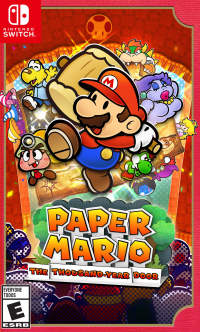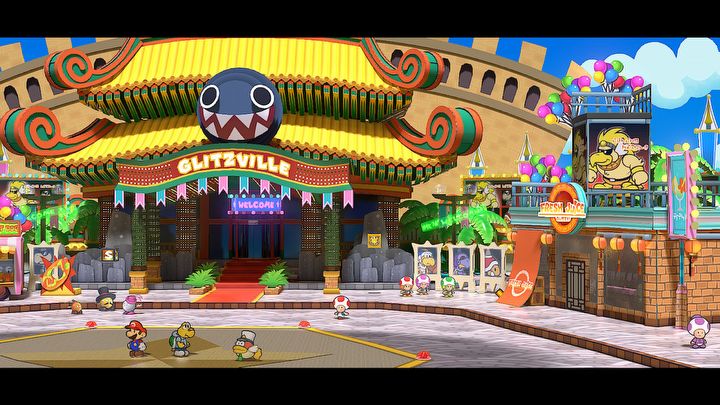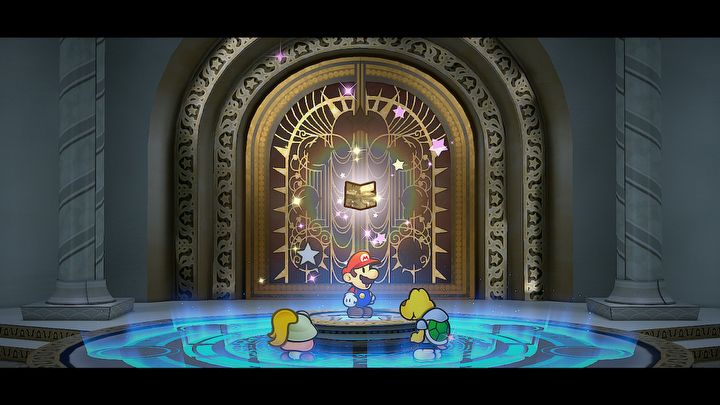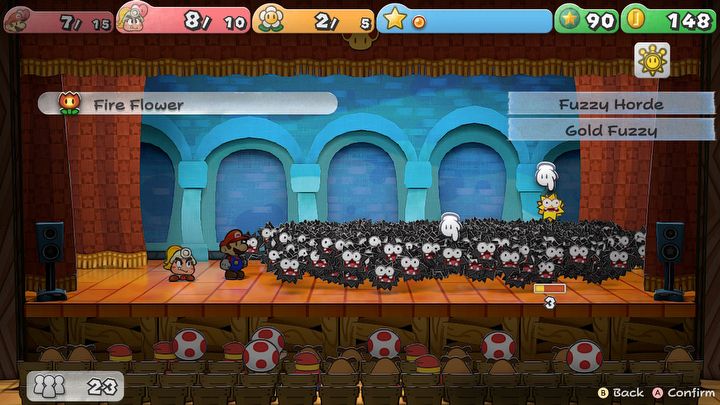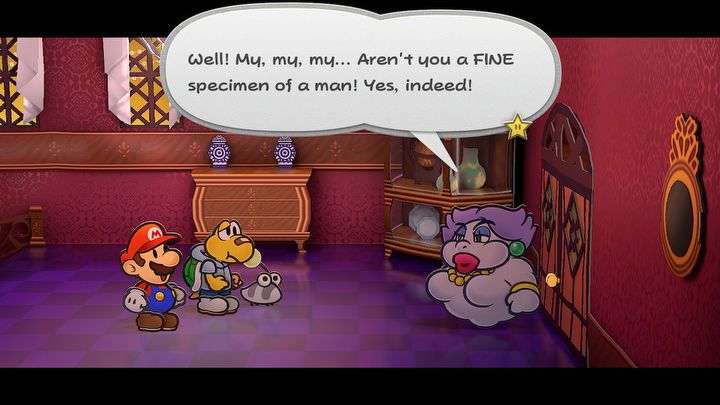Paper Mario: The Thousand-Year Door Review: Unfolding a Classic
20 years after its debut, one Paper Mario game still stands strong as the absolute best in the series. Can a Switch remake make it even better? See what we think in our review.
The review is based on the Switch version.
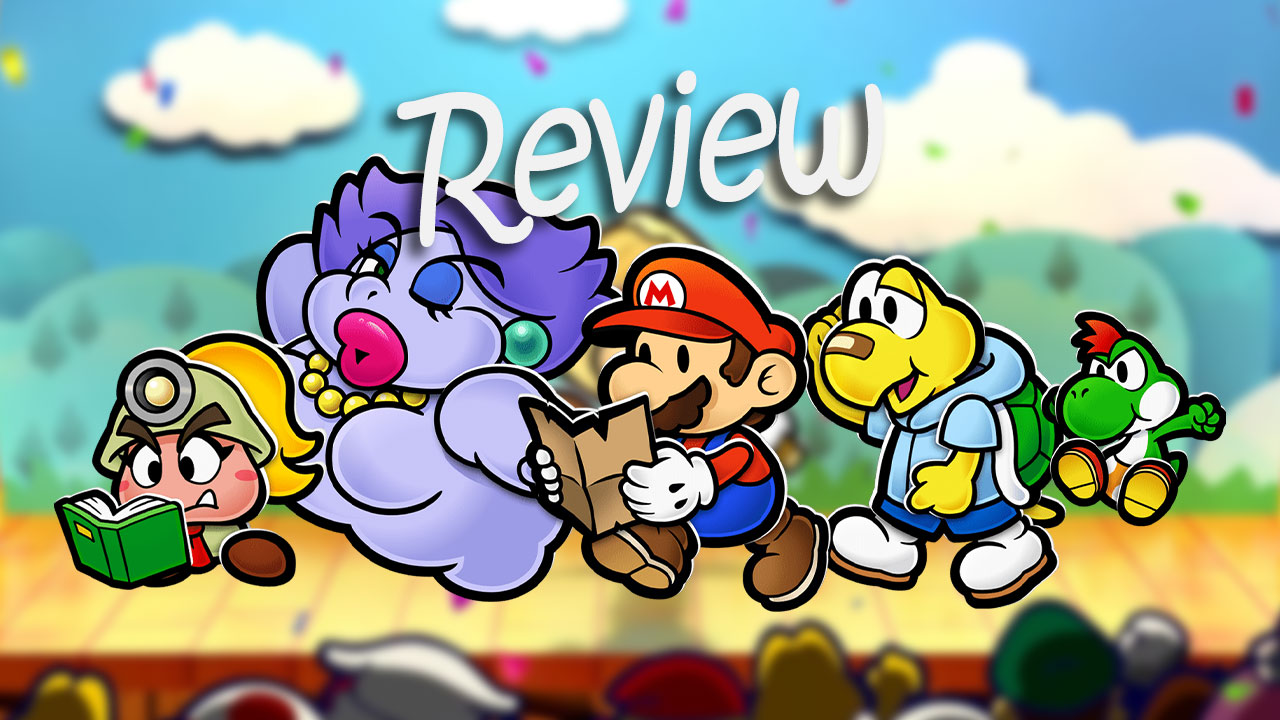
Paper Mario: The Thousand-Year Door is regarded by many as the last classic Mario RPG to be released simply because of its turn-based gameplay and no-nonsense approach to combat. Future Paper Mario games have changed this original format in an attempt to feel fresh and innovative, but there is no denying this GameCube gem charmed us with its simple yet engaging format—and still does 20 years later. It’s a game filled with humor, fun battles, and characters you can easily fall in love with and it’s now accessible to a new generation of players.
On Switch, Thousand-Year Door shines even brighter thanks in part to some updated visuals, quality of life improvements, and some updates to its gameplay that make it feel and sound like the ultimate version. It may still have some pacing issues and some small drawbacks that cause it to get repetitive at times but it’s still one of the most enjoyableMario RPGs you will play.
A Classic Tale Retold
Thousand-Year Door begins with a simple story that gets more interesting as you progress through its eight chapters. In fact, its story is what will keep you hooked not so much because of any groundbreaking themes but more so in how it weaves various plots and characters together to bring its world to life. This is the game’s strongest asset and one that is as important as its combat system simply because of how it holds the game together.
Simple yet effective, the game’s story starts off with Mario venturing to the city of Rogueport after Peach sends him a letter and a treasure map. He discovers Peach is nowhere to be found but soon finds out more about the ancient city beneath Rogueport and the powerful Crystal Stars he will need to collect before the no-good X-Nauts beat him to it. It’s what you expect from a family-friendly Mario adventure, but the difference here is just how fun and lighthearted the writing can when it weaves various plots together and comes with witty and comedic lines that are sure to at least make you smile every few minutes.
The story may have stayed intact from the original, but some changes here include new sounds that play when conversation lines scroll through the screen. Similar to that in Animal Crossing, this gives each character a unique “voice” and is much better than hearing the one-dimensional sound from the GameCube version. The remake also features updated localization and changes to certain lines, even removing certain references that would sound offensive to some nowadays. Love ‘em or hate ‘em, these updates don’t rob the game of its original charm but simply replace them with new punch lines or zingers instead.
Alongside its witty script, the game will take Mario and his new friends across various worlds that look more vivid and colorful than they have ever looked. Even though it’s running at 30 FPS instead of the original’s 60, the experience doesn’t diminish but instead feels more enhanced thanks to newly drawn character models and some impressive backgrounds that give each world you visit some wonder and plenty of life. From a glowing forest, to murky underground ruins, to even a floating glitzy casino, every place you visit has its own distinguishing flair. Its soundtrack has also been updated, and its battle theme features nuances to its arrangement that change depending on your location. It’s these little touches that make it feel even more inviting than before.
Turn-Based Combat Made Better
Thousand-Year Door’s combat system also features some familiarity with a splash of newness that makes it a joy to experience. To start a battle, Mario just needs to touch an enemy, but you can also jump on or hit them with a hammer to get a turn advantage when the battle starts. Once combat begins, you and your partner take turns attacking your foes until their health is depleted and you win. It’s simple on paper, but later battles will encourage you to strategize what enemies you should attack first and what kinds of attacks from your partners will be most effective in certain situations.
Beyond just attacking enemies, your battles also take place on a literal stage where Goombas, Shy Guys, and other characters will be watching your performance. Your attacks require you to perform certain actions to get the most out of your experience, but timing is also important as it will allow you to guard certain attacks and even impress the audience more. Their cheers will fill up your Star Power meter allowing you to pull off special abilities from the Crystal Stars you collect. Again, while battles are simple and straightforward, there are plenty of ways to enjoy them as long as you master the basics.
Each battle rewards you with Star Points that level up Mario and allow you to increase his Health Points, Flower Points, or Badge Points. Flower Points are like your magic meter and let you pull off strong abilities while Badge Points allow you to equip some ability-boosting badges that allow you to customize your approach in certain situations. There is one badge, for instance, that removes your hammer but increases your jump power. Pair it up with a badge that provides you with an added jump ability, and you can essentially make Mario the quintessential “Jump Man.”
Despite some of its shortcomings in pacing and lack of new content, Thousand-Year Door does a lot of things right and showcases how good this 20-year old game still is. From its classic turn-based system, complex yet lighthearted themes, and beautifully recreated worlds that make the most out of its papery aesthetic, there is plenty to love about this remake.
Find all our reviews on Metacritic and Opencritic.
Exploration’s Ups and Downs
Your party members are also helpful outside of battle and once you meet them you will realize you’ll need their abilities to solve some simple puzzles that let you explore more of your world. It’s not as complex as in, say, a Metroidvania, but this opens up exploration and encourages you to keep your eyes peeled for secrets such as star pieces or shine sprites that can unlock rare badges or power-up your partners’ moves respectively.
Exploration is a great feature in Thousand-Year Door, but how you make your way through the world still feels rather cumbersome as it will involve a lot of back-tracking. Even after beating a boss, for example, you will sometimes need to make your way back through the same area you just came through to get back to the main hub world of Rogueport. The game does add some quick-travel pipes to ease some of this, but the experience does lagin the beginning as the game is slow to rev things up.
The story also follows a familiar pattern during the first half that makes it all feel predictable: find where to go next, reach that destination, find a new partner, use their ability to defeat that world’s enemies, and finally beat the boss at the end to get the Crystal Star you need before making your way back to Rogueport to rinse and repeat. Thankfully, the last half of the game picks up the pace and ties everything together with a nice action-packed bow.
- ultimate version of a GameCube classic;
- beautiful worlds that feature their own dynamic soundtracks;
- top-notch writing and witty jokes;
- loveable characters you will love playing.
- pacing tends to lag in the beginning;
- not a lot of new content included here.
Final Thoughts
Beyond completing the story, there really isn’t much else to do in the way of side missions or extra content. Sure, you can take up sidequests for coins and extra goodies, but you can only do one of them at a time and you will need to make your way back to Rogueport to complete each one. Thousand-Year Door does add plenty of updates that make the game more accessible such as a handy hint system, more save blocks, and even allowing you to restart a boss battle from the start. It lacks, however, a good amount of new content that would have made it feel more robust compared to, say, Super Mario RPG.
Despite some of its shortcomings in pacing and lack of new content, Thousand-Year Door does a lot of things right and showcases how good this 20-year old game still is. From its classic turn-based system, complex yet lighthearted themes, and beautifully recreated worlds that make the most out of its papery aesthetic, there is plenty to love about this remake. This is a must for any Switch owner looking for an impressive yet accessible RPG to add to their collection.
Paper Mario: The Thousand-Year Door
Paper Mario: The Thousand-Year Door Review: Unfolding a Classic
20 years after its debut, one Paper Mario game still stands strong as the absolute best in the series. Can a Switch remake make it even better? See what we think in our review.
